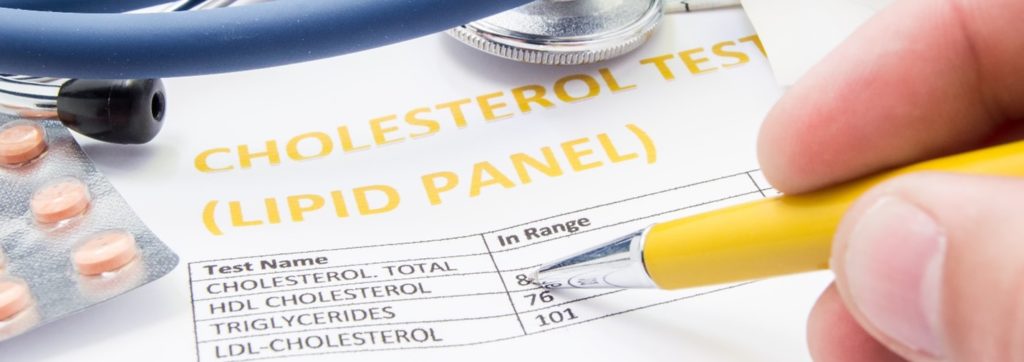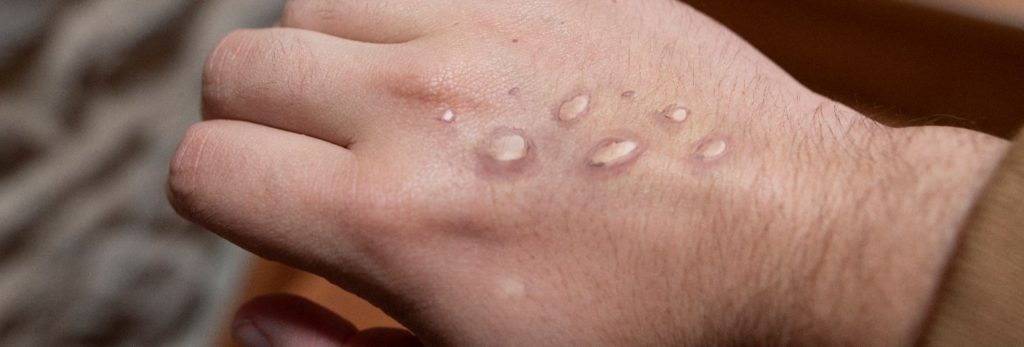We get it, you see a lot of medical newsletters, so hear us out. Twice a month, we’ll highlight important medical news sprinkled with witty commentary, fun facts, giveaways, and more… because learning should be fun! Subscribe to receive the Morning Report directly.
A First! Fatty Liver Guidelines—for PCPs
LIVER LEARNINGS

Don your bomber jacket and aviator shades for this one. The news out of the AACE (American Association of Clinical Endocrinology) annual meeting last month was as welcome and long overdue as the Top Gun sequel. The AACE unveiled the first guidelines for the diagnosis and management of nonalcoholic fatty liver disease (NAFLD) for—wait for it—primary care providers (PCPs) and endocrinologists. Goodness gracious, great balls of fire!
Highlights of the new guidelines
Early identification of NAFLD: Screen all patients at increased risk for NAFLD. This group includes patients with obesity, prediabetes, type 2 diabetes mellitus, and/or ≥2 other features of metabolic syndrome. Screening should also extend to patients with hepatic steatosis discovered on imaging and/or anyone with elevated liver enzyme levels with an unknown cause.
How to screen: Use the recently FDA-approved fibrosis-4 (FIB-4) index, a calculation that draws from blood tests you already order. The FIB-4 score = age (in years) x AST (U/L)/[PLT (109/L) x ALT 1/2 (U/L)]. Treat low-risk patients (FIB-4<1.3) in the primary care setting. Treat or refer intermediate-risk patients (FIB-4 1.3-2.67) and refer high-risk patients (FIB-4>2.67).
Treatment in the primary care setting: Focus on lifestyle interventions, cardiovascular risk reduction, and weight loss for those with obesity. While no medications presently have an FDA indication for NAFLD, pioglitazone, semaglutide, and liraglutide have shown efficacy in treating nonalcoholic steatohepatitis (NASH) and preventing progression.
Key takeaway
Approximately 25% of Americans live with NAFLD, but only an estimated 5% know of their condition. Armed with the AACE guidelines, clinicians on the front line of NAFLD care (like you) can improve those percentages and, ultimately, outcomes for these patients. If these recommendations prove to be as “practical and easy to incorporate” as experts claim, we may soon see an attenuation of NAFLD-related morbidity and mortality, keeping patients out of the danger zone. It may be hyperbole, but these guidelines take our breath away. The AACE can be our wingman anytime.
Another First! FDA Approves First-in-Class Diabetes Agent
ENDO END POINTS

The FDA approved the first injectable dual incretin agonist, tirzepatide, for the treatment of patients with type 2 diabetes mellitus (T2DM). Bolstered by impressive clinical trial results, tirzepatide is now ready for real-world use. But will this first-in-class agent deliver? Our anticipation draws parallels to the hype surrounding a first-round NBA draft pick. Will tirzepatide be the Lebron James we expect it to be, changing the game and raising the bar in diabetes care?
Tirzepatide’s highlight reel thus far
This agent stands apart because it activates both the glucagon-like peptide-1 (GLP-1) and glucose-dependent insulinotropic polypeptide (GIP) receptors, resulting in increased glucose control. The SURPASS clinical trial program put this theory to the test, comparing tirzepatide to a placebo, a GLP-1 receptor agonist (semaglutide), and two long-acting analogs. Tirzepatide at 15 mg proved more efficacious in lowering HbA1c, making it a new potential choice as either a stand-alone therapy or an add-on to other medications.
But what about obesity management? you inquire. Tirzepatide is glad you asked. That is an area where it significantly outpaced some of the current competition, and FDA approval for weight management may soon follow. With tirzepatide continuing to drain 3s, we can’t help but wonder what ongoing trials will soon show in terms of lowering cardiovascular risk.
Key takeaway
The approval of tirzepatide offers clinicians a powerful new option in the management of T2DM. If this new agent is as effective at reducing HbA1c and weight in clinical practice as it has been in clinical trials, it could become a new standard in diabetes care. Of course, no drug is perfect—see tirzepatide’s list of side effects and counterindications. And as always, cost should also be considered when developing a management plan for your patients. But overall, we hope this new option will be a slam dunk when it comes to helping patients in the real world.
For a closer look at the tirzepatide trial data, check out a recent session in Pri-Med’s obesity and diabetes curriculum (launched in December 2021, before the FDA’s approval).
Did Researchers Just Put HDL-C in the Corner?
CARDIO CORNER

In this ever-changing world, some facts are as immutable as gravity: nobody puts Baby in a corner; if you build it, he will come; and nothing lasts forever (even cold November rain). And of course, when it comes to high-density lipoprotein cholesterol (HDL-C), aka the “good” cholesterol, the more the better, right? Perhaps not. Last month, a large prospective cohort study showed that high levels of HDL-C in high-risk populations may not be so good after all.
When comparing high levels of HDL-C (>80 mg/dL) with mid-range levels (40-60 mg/dL) in patients with coronary artery disease (CAD), researchers found significantly higher risk of all-cause mortality and cardiovascular mortality. And this finding was independent of common genetic polymorphisms associated with high HDL-C. Quite the paradox!
What is the explanation for these findings?
Although we do not yet know the cause of this paradoxical phenomenon, it is thought that very high levels of HDL-C may slow the process of clearing low-density lipoprotein cholesterol (LDL-C) or that HDL-C particles may take on inflammatory properties themselves. Furthermore, elevated HDL-C can be attributed to multiple factors, such as genes, diet, medication, and some health conditions.
Key takeaway
(1) Science will forever keep us on our toes. (2) This revelation is an important reminder for clinicians to continue monitoring the cholesterol levels of high-risk patients and to consider the complete picture when assessing cardiovascular risk. (3) It’s possible to have too much of a good thing.
Rapid-Fire COVID-19 Updates
COVID QUICK HITS

Corticosteroids, the utility infielder of your medical toolbox, may have a new position to play: treating COVID-19. In a systematic review and meta-analysis, researchers found that use of the corticosteroid methylprednisolone, in comparison with no corticosteroid use, demonstrated the following benefits in patients with severe COVID-19:
- A 27% reduction in short-term mortality
- 23% fewer ICU admissions
- A 31% decrease in the need for mechanical ventilation
- No increased risk of secondary infections, but possibly a prolonged duration of viral shedding
Key takeaway
Your patients with severe COVID-19 may benefit from methylprednisolone treatment at 1 to 2 mg/kg/day for ≤7 days. Given the limitations of other outpatient treatment options, this is exciting news and begs the question, What can’t steroids do? Add COVID-19 to the list of areas in which steroids have offered improvements: inflammation, severe allergies, flareups of chronic illnesses, and symptoms of cancer—oh, and of course, 1990s home run counts.
In other COVID-19 news …
- Neuropsychiatric ramifications of severe COVID-19 and other severe acute respiratory infections
- CDC committee recommends COVID-19 booster for kids aged 5 to 11 years
- Effects of COVID-19 infection on the thyroid gland still present after one year
CDC Issues the 411 on Monkeypox
INFECTIOUS FINDINGS

The world needs another infectious disease outbreak like we need another dip in the stock market. Monkeypox virus infection, typically confined to several African countries, has sprouted around the globe, with 18 confirmed cases in the United States as of this writing. Fortunately, the CDC is on top of it, issuing a Health Alert Network (HAN) Health Advisory with everything you need to know to mitigate this outbreak.
This handy summary presents timely recommendations for clinicians. Per the CDC, consider a monkeypox diagnosis when patients present with a rash with vesicles or pustules that are deep-seated, firm or hard, and well-circumscribed. Symptoms may include fever, chills, the distinctive rash, or new lymphadenopathy, and the onset of perianal or genital lesions in the absence of subjective fever may occur. Clinicians should maintain a high index of suspicion for monkeypox when signs and symptoms occur in the following groups:
- Men who have sex with men and who present with lesions in the genital/perianal area
- Individuals with a travel history in the month before illness onset
- Individuals in contact with people who have a similar rash or have received a diagnosis of suspected or confirmed monkeypox
Visit this link for details and continually updated information as this investigation evolves.
Could SIDS Biomarker (One Day) Help Parents Sleep Like a Baby?
PEDIATRIC PERSPECTIVES

Sudden infant death syndrome (SIDS) tops the long list of reasons new parents can’t sleep. Desperate to avoid this nightmare, many parents latched on to recent medical news articles with headlines like “World First Breakthrough Could Prevent [SIDS].” From your headline to God’s ears! The news referred to recently published research linking a biomarker to an increased risk of SIDS. And although we’d love nothing more than for this breakthrough to ultimately halt SIDS, we may want to take baby steps toward optimism.
Researchers conducted a case-control study to determine whether levels of the enzyme butyrylcholinesterase (BChE), taken from dried blood samples in 600 newborns, would correlate with a risk of SIDS. Of the small sample size, 26 died of SIDS and 30 died of other conditions. The results showed that, on average, the level of BChE was lower in babies who died of SIDS than in babies who died of non-SIDS causes or who survived. However, overlap in BChE values between groups did exist at the individual level, meaning a baby who died of SIDS and one who survived could share the same BChE value.
Key takeaway
This study suggests that a lower amount of BChE in infants may indicate a higher risk of SIDS. While this finding may be a seminal step in the quest to one day end SIDS, it may not yet allay parents’ fears. Until researchers develop an effective intervention to address the enzyme deficiency as a next step, screening infants will not provide actionable data. We hope this study leads to further research on interventions. In the meantime, clinicians can assuage parents’ fears by continuing to promote the standard safe infant sleep practices.
Interested in more healthcare news? Here are some other articles we don’t want you to miss:
- Gliflozins in the management of cardiovascular disease
- Screening for chronic obstructive pulmonary disease, US Preventive Services Task Force reaffirmation recommendation statement
- High levels of synthetic cooling agents in e-cigarettes may exceed safety thresholds
- Age and outcomes of early rhythm control in patients with atrial fibrillation: nationwide cohort study
- Ibuprofen, ketorolac, and diclofenac are equivalent for the treatment of acute, nonradicular low back pain
- On your back? Side? Face-down? Mice show how we sleep may trigger or protect our brain from diseases like ALS
Morning Report is written by:
- Alissa Scott, Lead Author
- Aylin Madore, MD, MEd, Author and Editor
- Shira Page, RN, NP, Author and Editor
Would you like to share your feedback with Morning Report? Drop us an email at morningreport@pri-med.com to let us know how we’re doing.
Please note that the summaries in Morning Report are intended to provide clinicians with a brief overview of an article, and while we do our best to select the most salient points, we ask that you please read the full article linked in each summary for clarification before making any practice-changing decisions.
Enjoying Morning Report? Subscribe & Share It With Your Colleagues!
Is Morning Report for you? It is if . . .
You’re someone who needs quick-hitting, accurate medical news and you’re a fun and witty healthcare professional who wants your news with some flare.
You don’t just need to know about the latest metabolism study–you also need to know how it parallels an Alanis Morissette hit. If you’re reading about acupuncture treatment, you need us to skip the needle puns and get right to the point. We keep things simple, but when we do get into the scientific weeds, we always remind you to check for ticks.
Subscribe to receive the Morning Report directly in your inbox every other Saturday.
As a leader in CME/CE for 27+ years, Pri-Med provides evidence-based in-person and online CME/CE for primary care clinicians. Explore our education to earn credits and stay informed on the most current clinical strategies relevant to your daily practice.



